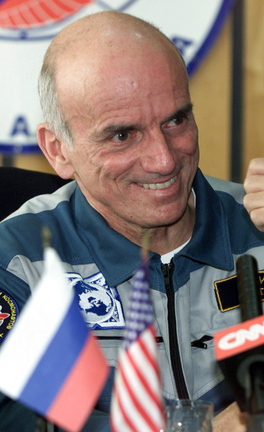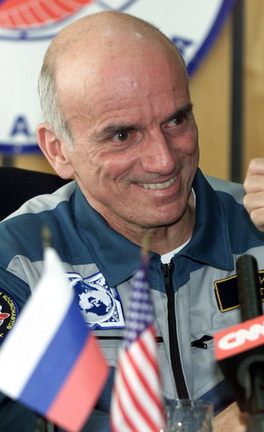Billionaire Dennis Tito, tired of being told that we can’t send humans to Mars just yet, on Wednesday revealed his scheme for launching two astronauts to the red planet as early as December 2017.
Dubbed “Inspiration Mars,” the fly-by mission would exploit a rare alignment of Earth and Mars that minimizes the time and the fuel it would take to get to Mars and back home again. The astronauts would come within 100 miles of the Martian surface before being slung back to Earth.
“It would be a voyage of around 800 million miles around the sun in 501 days,” Tito testified Wednesday at a hearing of the House subcommittee on space. “No longer is a Mars fly-by mission just one more theoretical idea. It can be done. Not in a matter of decades, but in a few years.”
Grab this opportunity or risk seeing China get to Mars first, the space buff told the members of Congress.
The plan has a lot of moving parts, and would require cooperation from NASA and a great deal of NASA hardware. The agency is building a jumbo rocket, the Space Launch System (SLS), that is supposed to be ready for its inaugural, uncrewed test flight in 2017. Tito’s plan would essentially borrow the SLS for the Mars mission.
NASA officials did not immediately respond to Tito’s detailed proposal. In late October, in response to questions about possible collaboration Inspiration Mars and NASA, the agency released a cautiously worded statement, saying, “The agency will continue discussions with them to see how NASA might collaborate on mutually-beneficial activities that could complement NASA’s human spaceflight, space technology and Mars exploration plans. The agency has not made any commitments to Inspiration Mars related to launch vehicles.”
Tito’s Inspiration Mars Foundation released a feasibility study Wednesday that concluded that NASA’s new Orion capsule wouldn’t meet the mission requirements as the primary habitat for the astronauts. Instead, Tito’s organization would use the new Cygnus capsule developed by Virginia-based Orbital Corp. (formerly Orbital Sciences), which just recently made a successful, uncrewed cargo-hauling trip to the international space station.
This journey to Mars wouldn’t come cheap. Tito described Inspiration Mars as a “philanthropic partnership with government.” He said private donors would likely give about $300 million for the mission, and the government would need to provide about $700 million — in addition to the money NASA is already spending, under current programs, on rocket and spacecraft development.
The timing of the mission also presents a challenge. The Tito plan would require that NASA and the private partners adopt the project wholeheartedly and immediately, with little wiggle room. The planetary alignment, which happens only once every 15 years, presents a narrow launch window. The mission would have to begin sometime between Christmas Day 2017 and Jan. 5, 2018 to take advantage of the orbital dynamics of the planets.
Two launches would be required for the Mars fly-by mission, according to the Inspiration Mars feasibility study. First, the big SLS rocket would launch into Low Earth Orbit the empty Cygnus capsule, plus other hardware needed for the mission. Then, the two astronauts would blast into orbit on a commercial rocket and spacecraft that have yet to be identified (there is a competition under way among private companies to develop rockets and capsules to ferry NASA astronauts to the international space station).
The astronauts in their commercial capsule would rendezvous with the Inspiration Mars vehicle and climb inside the Cygnus capsule. The upper stage of the SLS would then ignite and rocket the Inspiration Mars vehicle to Mars. At the end of the mission, more than a year later, the crew would re-enter the Earth’s atmosphere in a “pod” designed to survive the extreme speed and associated heat of re-entry.
The Inspiration Mars study emphasizes that this will be a U.S. mission and warns that other nations have similar designs for deep-space adventures.
“For America, this is our last chance to be first, and even the very movement of planets seems to be saying ‘Go,’ ” the report states.
Tito mentioned a back-up plan: Another alignment of planets in 2021 would make a somewhat longer mission possible — add another 80 days — and require that the astronauts fly closer to the sun than the planet Venus as part of the mission.
Send questions/comments to the editors.




Success. Please wait for the page to reload. If the page does not reload within 5 seconds, please refresh the page.
Enter your email and password to access comments.
Hi, to comment on stories you must . This profile is in addition to your subscription and website login.
Already have a commenting profile? .
Invalid username/password.
Please check your email to confirm and complete your registration.
Only subscribers are eligible to post comments. Please subscribe or login first for digital access. Here’s why.
Use the form below to reset your password. When you've submitted your account email, we will send an email with a reset code.